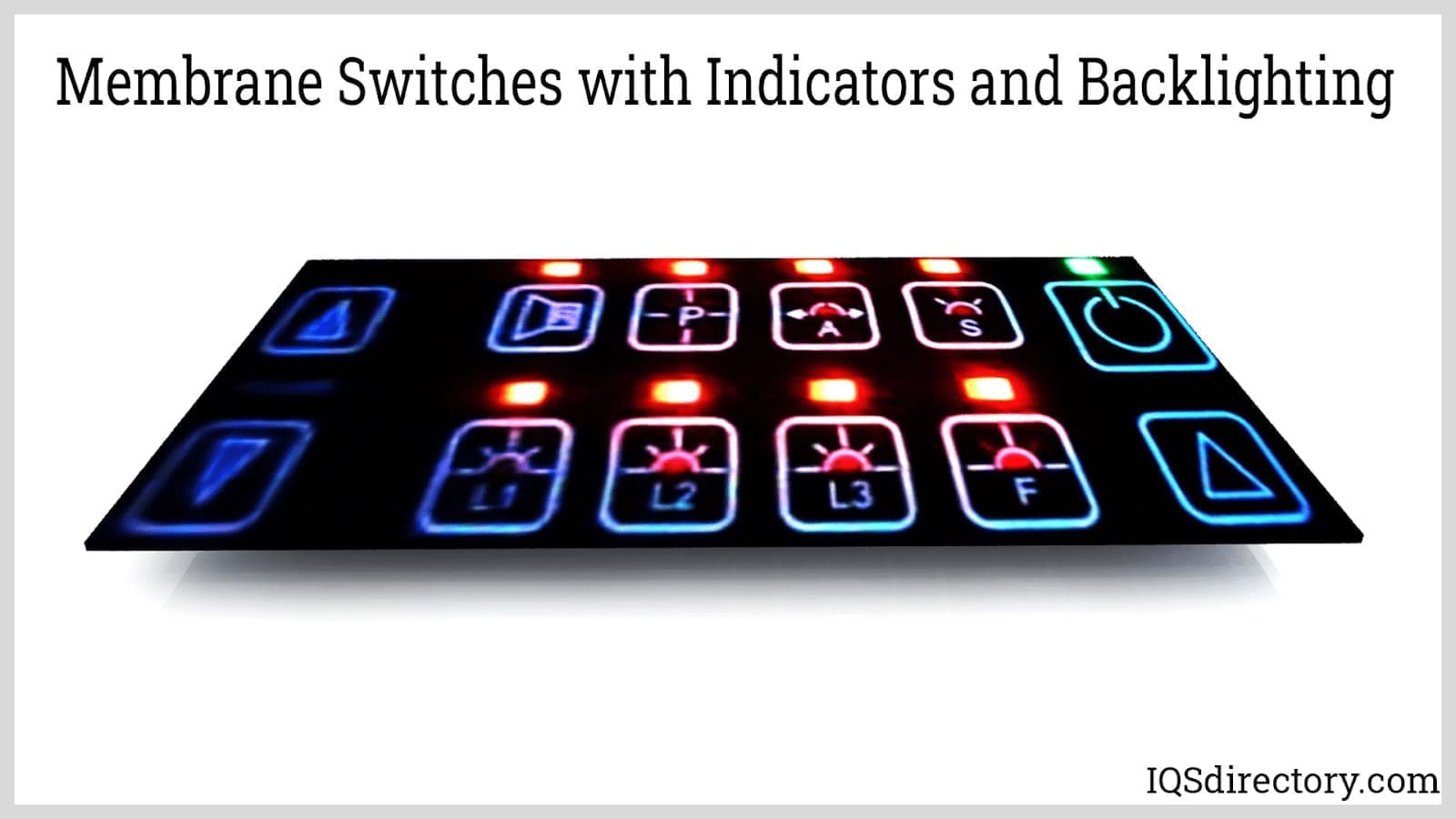Comprehending Membrane Layer Switches Over: The Secret to Durable and Trusted Controls
Membrane layer switches over stand for a critical aspect of modern user interface layout, blending performance with strength in numerous applications. As we check out the intricacies of membrane buttons, it comes to be clear that their function in boosting control systems is both profound and intricate, elevating concerns about how ideal to take advantage of their abilities in future advancements.
What Are Membrane Buttons?
Membrane layer buttons are an advanced remedy in the world of interface modern technology, integrating capability and design flawlessly. These devices function as a user interface between customers and electronic systems, integrating a number of components into a small format. Generally created from versatile, thin layers of products, membrane layer buttons are developed to reply to touch, making it possible for users to engage with equipment and electronic tools efficiently.
The primary aspects of a membrane button include a printed circuit layer, visuals overlay, and a spacer layer that prevents unintentional activation. The visuals overlay can be customized to show brand name identity or customer preferences, improving aesthetics while guaranteeing functionality. Membrane switches are commonly made use of in different applications, consisting of clinical gadgets, customer electronic devices, and commercial tools, owing to their sturdiness and resistance to ecological variables such as moisture and dirt.
One of the essential benefits of membrane switches is their capability to hold up against deterioration, making them perfect for high-traffic settings. Furthermore, they are lightweight and require very little area, permitting innovative layouts in product growth. In general, membrane layer switches represent a effective and useful selection for modern electronic user interfaces, weding modern technology with user-centric style concepts.

Exactly How Membrane Layer Switches Work
The operation of membrane layer switches over joints on a straightforward yet reliable device that translates user input into electronic signals. These buttons include multiple layers, generally consisting of a graphic overlay, a spacer layer, and a circuit layer. When an individual presses the button, the leading layer warps, permitting a conductive element in the circuit layer to reach an equivalent conductive pad on the bottom of the visuals overlay. This get in touch with closes the circuit and sends a digital signal to the gadget, suggesting that the switch has actually been turned on.
The style of membrane layer switches can differ, but they typically integrate domes or tactile elements to provide feedback to the user, improving the total experience. The materials used in membrane layer buttons, such as polyester or polycarbonate, add to their resilience and resistance to ecological elements, consisting of wetness and dust. The published circuits are generally encapsulated, which protects them from wear and tear over time.

Advantages of Membrane Layer Switches
One of the key benefits of membrane switches is their convenience in layout, allowing them to be tailored to fulfill particular individual demands and aesthetic needs. This versatility expands to various markets, where different forms, sizes, and colors can be used to enhance customer interaction and aesthetic charm.
In addition, membrane buttons are known for their durability. Constructed from robust products, they are immune to dirt, moisture, and physical wear, which Learn More substantially extends their life-span compared to traditional mechanical switches. This longevity makes them particularly ideal for high-traffic environments and applications calling for durability.

Additionally, membrane layer buttons provide a streamlined profile, leading to a thinner layout that can be incorporated right into various gadgets without adding bulk. This function not just enhances the aesthetic appeal yet likewise adds to an extra ergonomic item design.

Applications of Membrane Buttons
User-friendly and versatile, membrane layer switches discover applications throughout a variety of industries, consisting of clinical tools, consumer electronic devices, and commercial equipment. In the medical field, these switches are integral to tools such as diagnostic equipment, person monitoring systems, and mixture pumps, where integrity and simplicity of cleansing are essential. Their capability to keep and stand up to extreme atmospheres functionality makes them excellent for such applications.
In consumer electronic devices, membrane layer switches are used in items like microwaves, washing equipments, and push-button controls - membrane switch. Their streamlined design permits intuitive customer interfaces, enhancing the overall individual experience while giving longevity and resistance to put on and tear
Industrial equipment also profits from membrane click here to find out more switches, especially in control panels for equipment and automation systems. These buttons offer security versus dirt and moisture, making certain consistent performance in difficult settings. Furthermore, their personalized features permit makers to customize them to particular operational requirements, enhancing effectiveness and functionality.
Picking the Right Membrane Layer Switch
When choosing a membrane layer button, it is necessary to take into consideration numerous variables that affect efficiency and viability for certain applications. The main considerations consist of environmental conditions, tactile comments, resilience, and style specifications.
First, evaluate the operating atmosphere; switches exposed to dampness, chemicals, or extreme temperature levels require details materials to ensure durability and capability. Next, assess the need for tactile responses. Relying on individual interaction, some applications may profit from a responsive feedback to validate activation, while others might prefer a non-tactile design for visual reasons.
Longevity is an additional essential factor; membrane layer buttons should be made to withstand regular usage, influences, and abrasion. Make sure the chosen button can sustain the expected lifecycle, specifically in high-usage circumstances.
Conclusion
In verdict, membrane layer switches serve as crucial components in the layout of sturdy and trusted control systems throughout various markets. The adaptability of membrane switches over permits for tailored services that fulfill details functional requirements, reinforcing their importance in modern technology.
Membrane switches over represent a vital facet of modern interface design, mixing performance with resilience in different applications.Membrane buttons are an advanced solution in the realm of customer interface technology, integrating functionality and design perfectly. Commonly built from flexible, thin layers of products, membrane layer buttons are made to respond to touch, making it possible for individuals to communicate with equipment and electronic tools effectively.
The layout why not try this out of membrane switches can differ, yet they usually integrate domes or tactile aspects to give responses to the user, enhancing the total experience.In verdict, membrane layer changes serve as crucial elements in the design of resilient and dependable control systems across different industries.
 Molly Ringwald Then & Now!
Molly Ringwald Then & Now! Jenna Jameson Then & Now!
Jenna Jameson Then & Now! Tonya Harding Then & Now!
Tonya Harding Then & Now! Barbara Eden Then & Now!
Barbara Eden Then & Now! Sarah Michelle Gellar Then & Now!
Sarah Michelle Gellar Then & Now!